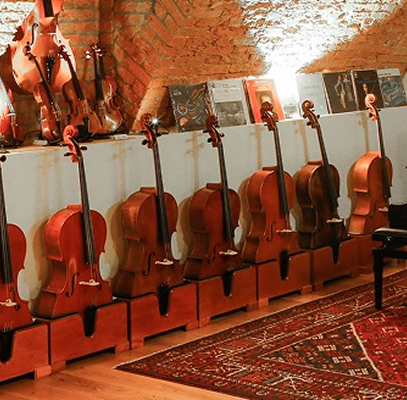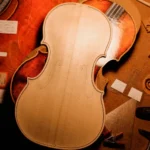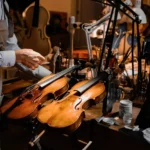Violin Player Guide: 4 Things You Should Be Doing
Back to BlogAs a violin player, there are some things you should do to keep your violin in top condition. These are also known as maintenance tasks, and all violins need them. Your violin will be better suited for you if you learn how to perform these maintenance tasks.
To get the most out of your instrument, taking good care of it is important. If you’re looking to sell your instrument in the future or want to ensure you get plenty more years of playing out of it, proper protection is key. We’ve put together some of our best tips and advice to help you look after your violin.
Prevent your instrument from damage caused by changes in humidity levels
Humid weather
Letting your violin bask in the sunlight for a few minutes may help it to dry out, but make sure you don’t leave your instrument in the sun for too long. That could damage the varnish and even lead to cracks in the wood.
Dry weather
Remember to use a string instrument humidifier such as Dampit, which will help to prevent damage caused by dry air. It will also help to stabilize the internal humidity level in your violin or viola. The hair of the bow is also affected by seasonal temperature and humidity. In the summer, it stretches; in the winter, it shrinks. Pay attention as the bow may also be susceptible to climate change.
Clean the violin body and the string, but with different cloths
After every practice session, you should always clean your violin with a dry flannel. Sweat can sometimes be released while playing; clean it to prevent the rosin from bonding with the varnish.
The sweat of our hands penetrates the strings resulting in oxidation. Do you have any idea how you can prevent it? Our tip is to grab a piece of cotton with a few drops of mineral oil to lubricate the strings and warm them up. The mineral oil will penetrate internally in the strings and protect them from sweat, helping to prolong their life span. But be careful; cover the fingerboard with a piece of paper before doing it, and don’t forget to pass it only in the fingerboard region, not where the bow plays.
Be aware of the height of the strings.
It is important that the string height is set to the musician’s preference. Some violinists like their strings a little higher, while others prefer them lower; each has its advantages.
Lubricate the fine tuner.
Lubricate your fine tuners with graphite, and they’ll move easily. Rosin bonds to the fine-tuner screw, making it hard to turn. Reduce this by lubricating it with graphite. Ensure your fine tuners are well-fitted to their tailpieces and not loose for optimal performance.
Bridge and Soundpost
A violin’s bridge and soundpost are like the foundation of a house—you don’t want to change them every time you move, but if you do a few tweaks with your luthier every now and then, your home will sound brand new! To check the placement of the soundpost, put your instrument in a horizontal position. When viewed from above, the soundpost should be like a column—straight and parallel to the top plate. As well as the bridge, it should also be at a 90-degree angle with the top plate.
Rehairing the bow
If you’re not sure when the right time to change the hair on your bow is, look for the signs below:
-There is a lack of grip on the strings
-The instrument sound is lacking in depth and is sandier
-The bow hair has blackened and broken easily









